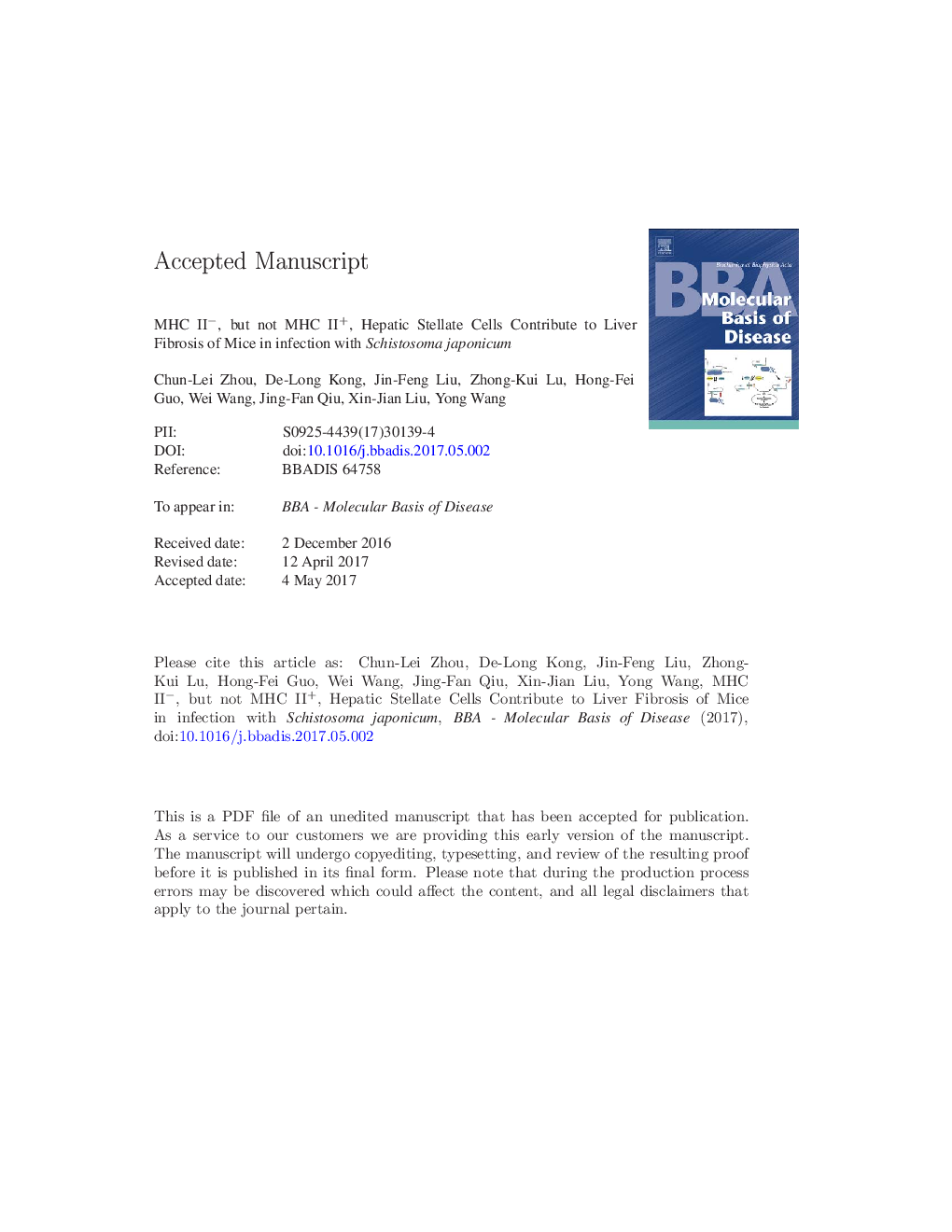| Article ID | Journal | Published Year | Pages | File Type |
|---|---|---|---|---|
| 5500957 | Biochimica et Biophysica Acta (BBA) - Molecular Basis of Disease | 2017 | 40 Pages |
Abstract
Hepatic stellate cells (HSCs) are considered as the main effector cells in vitamin A metabolism and liver fibrosis, as well as in hepatic immune regulation. Recently, researches have revealed that HSCs have plasticity and heterogeneity, which depend on their lobular location and whether liver is normal or injured. This research aimed to explore the biological characteristics and heterogeneity of HSCs in mice with Schistosoma japonicum (S. japonicum) infection, and determine the subpopulation of HSCs in pathogenesis of hepatic fibrosis caused by S. japonicum infection. Results revealed that HSCs significantly increased the expressions of MHC II and fibrogenic genes after S. japonicum infection, and could be classified into MHC II+ HSCs and MHC IIâ HSCs subsets. Both two HSCs populations suppressed the proliferation of activated CD4+ T cells, whereas only MHC IIâ HSCs displayed a myofibroblast-like phenotype. In response to IFN-γ, HSCs up-regulated the expressions of MHC II and CIITA, while down-regulated the expression of fibrogenic gene Col1. In addition, praziquantel treatment decreased the expressions of fibrogenic genes in MHC IIâ HSCs. These results confirmed that HSCs from S. japonicum-infected mice have heterogeneity. The MHC IIâ α-SMA+ HSCs were major subsets of HSCs contributing to liver fibrosis and could be considered as a potential target of praziquantel anti-fibrosis treatment.
Keywords
Related Topics
Life Sciences
Biochemistry, Genetics and Molecular Biology
Ageing
Authors
Chun-Lei Zhou, De-Long Kong, Jin-Feng Liu, Zhong-Kui Lu, Hong-Fei Guo, Wei Wang, Jing-Fan Qiu, Xin-Jian Liu, Yong Wang,
